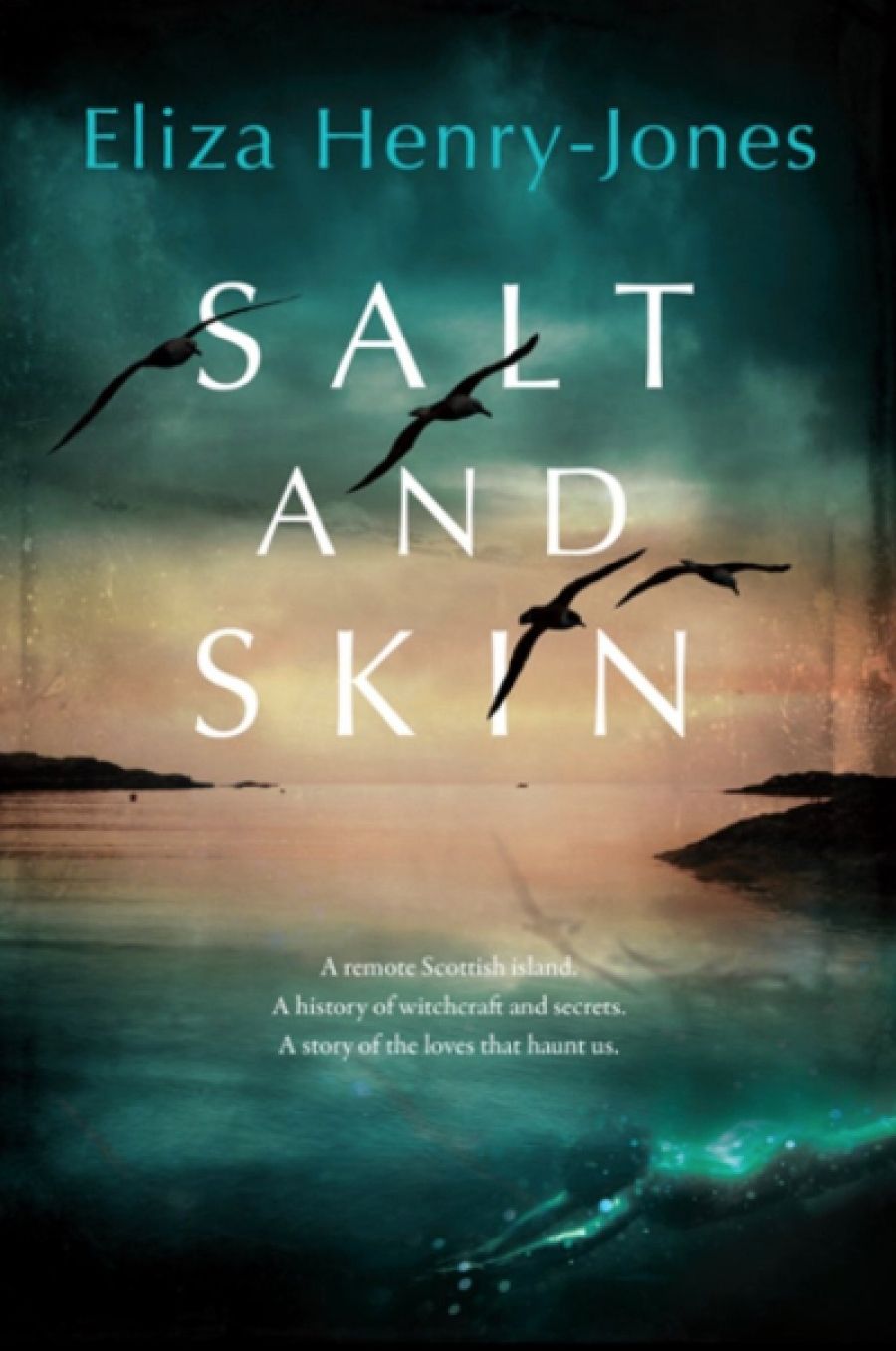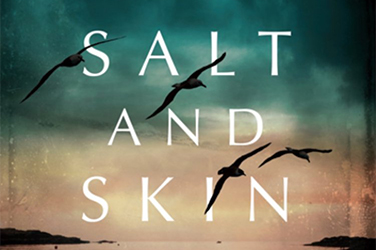
- Free Article: No
- Contents Category: Fiction
- Review Article: Yes
- Article Title: Witch marks
- Article Subtitle: Eliza Henry-Jones’s fifth novel
- Online Only: No
- Custom Highlight Text:
Salt and Skin is the fifth novel by Victorian-based writer Eliza Henry-Jones. Following the death of her husband, Luda moves with her two teenage children, Darcy and Min, from Australia to the remote Scottish islands. Luda, a photographer, is employed by the local council to document the effects of climate change on the islands and to raise funds for related activism. They will live on Seannay, a small tidal island off the main Big Island, in the isolated and ramshackle ‘ghost house’ that bears centuries-old markings on the ceilings, ‘witch marks’ thought to ward off evil.
- Article Hero Image (920px wide):

- Article Hero Image Caption: Eliza Henry-Jones (photograph supplied)
- Alt Tag (Article Hero Image): Eliza Henry-Jones (photograph supplied)
- Featured Image (400px * 250px):

- Alt Tag (Featured Image): Katherine Brabon reviews 'Salt and Skin' by Eliza Henry-Jones
- Book 1 Title: Salt and Skin
- Book 1 Biblio: Ultimo Press, $32.99 pb, 320 pp
- Book 1 Readings Link: booktopia.kh4ffx.net/kjr4ML
Henry-Jones made her début at twenty-five with the novel In the Quiet (2015). In that remarkable work the narrator, Cate, has recently died. The narrative follows Kate observing her husband and three teenage children as they grieve and move on after her death. A striking ability to represent grief on the page resonates across Henry-Jones’s work. The grief of In the Quiet was acutely personal. In one of many memorable vignettes, the narrator’s sister looks for ways to help her dead sister’s children: ‘Beatrice, unmoving in the children’s clothing aisle at Target. She has two T-shirts in her hands. One is blue with sequins, the other pink with a bow. Her hair is falling out of its clasp and she blows it out of her face.’
The grief in Salt and Skin is individual and collective. In Henry-Jones’s second novel, Ache (2017), told in the aftermath of devastating Australian bushfires, loss is also personal and community-wide in a town partially destroyed by fire. In Salt and Skin there is climate grief, with consequent anger and despair. There is grief over history and lost stories, as Luda researches women murdered on the islands after so-called witch trials in the seventeenth century. Each is remembered in the archive merely as an ‘unknown woman, accused of charming whales and children, and summoning storms.’ And there is the lost identity of young Theo, who washed up on the shores of the islands as a child with webbed hands and no idea who he was. ‘You know exactly where you’ve come from,’ Theo says to Darcy and Min as he pores over their childhood photo albums, feeling ‘[t]he absence of his own knowing, suddenly present like a fresh bruise.’
Henry-Jones has also published two novels for young adults, P is for Pearl (2018) and How to Grow a Family Tree (2020). This is instructive when we see how Henry-Jones centres young people, particularly teenagers, in her three novels for adults. In the Quiet’s poignantly focused attention mostly centres on the deceased narrator’s three teenage children. In Ache, the protagonist Annie and her young daughter Pip grapple with trauma after moving back to the fire-ravaged town they narrowly escaped.
In Salt and Skin, Luda’s children, as well as the ‘wild foundling’ Theo, are given close third-person perspectives. Darcy and Min’s grief and adaptation on the islands, over the course of the narrative’s three years, make for endearing characters. Theo and Min share a sibling-like friendship, while Theo and Darcy struggle with their mutual attraction. Theo’s alcohol addiction and self-harm as he tears at his webbed hands are devastating: ‘Pissed, he’s just like everyone else. Even with his goddamn hands.’ The multi-perspective narrative creates rich authenticity. We also hear snatches of conversation at the local pub in midwinter, and witness seasonal brushstrokes: ‘Summer comes. The star-dashed evenings disappear … The nights are short. They taste of salt.’
Theo the foundling is the subject of rumour and myth. A writer named Carter snoops around the isles, researching a book about Theo. Carter shows some discomfort on learning that Theo cannot read or write: ‘What are the ethics of writing a book about somebody who can’t read what you’ve written?’ Moral questions about storytelling recur in Luda’s insistence on the greater good of her cliff erosion photos, and in her attempts to investigate the women accused of witchcraft. While this last storyline is less developed, this was perhaps the author’s intention, signalled here in Carter’s moment of questioning the right to write about others.
Theo’s potentially mythical identity and other supernatural elements are invoked in a similar way to the deceased narrator of Henry-Jones’s first novel. Grounded in realism, these aspects occur without laboured explanation. On the island, one’s body becomes covered in silvery ghost scars – signs of every old injury or blemish. This eerie reification gestures to past violence. Looking at the witch marks on the walls and her own scars, Luda reflects: ‘scattered like stars, like stories across the walls and waves of the house, those witch marks’ sit alongside ‘her own history, netted in the scars on her skin’. This style prepares the reader before a major event later in the novel, after which grief and the supernatural overlap more overtly. Aptly on theme with long-erased histories and collective grief, there is no resolution but rather a resonant haunting.


Comments powered by CComment